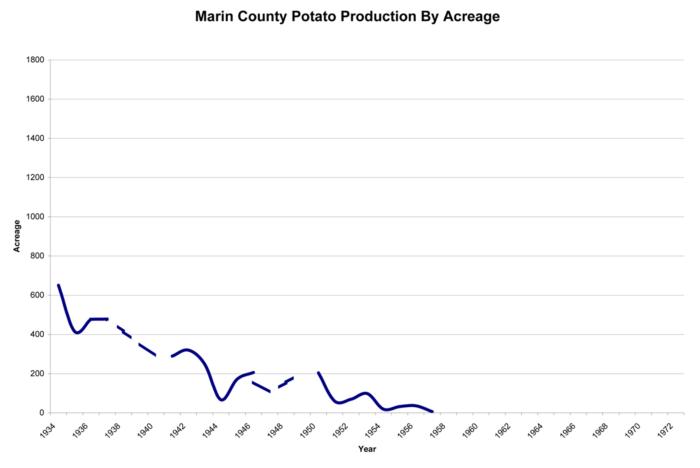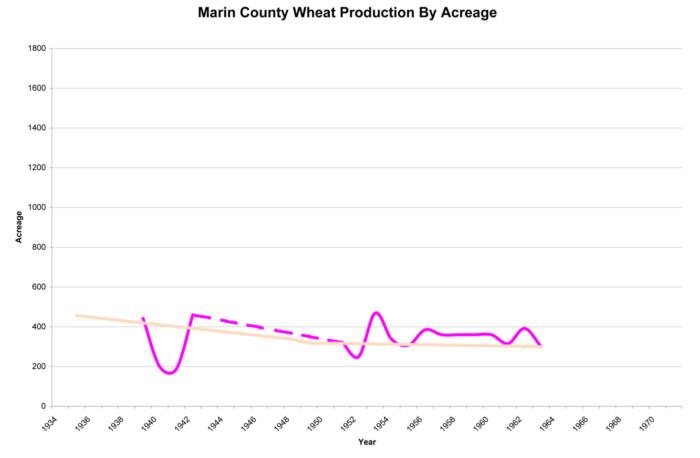Finding the right rotation
![GIMNOV2011[22] GIMNOV2011[22]](http://ucanr.edu/sites/Grown_in_Marin/files/131291display.jpg)
The Marshall Ranch, now the Thornton Ranch in Tomales, was settled in 1852. All kinds of agriculture typical of the Tomales area were practiced on this ranch over the years: farming, grazing, dairying, and forage production including hundreds of acres of grain. According to the agricultural statistics for 1867, Marin harvested 102,240 bushels of wheat grown on 3,936 acres that year.
![GIMNOV2011[33] GIMNOV2011[33]](http://ucanr.edu/sites/Grown_in_Marin/files/131308display.jpg)
Today, almost by default, we are rediscovering what works best in the Northwestern part of Marin County, and it looks very much like what the first farmers figured out. There isn't much available water for irrigation. It rains 44 inches on average per year, all in the winter. It then dries up for as much as 8 months during spring, summer, and fall. It is hilly and there is almost no perfectly flat farmland.
Marissa Thornton plowing Thornton Ranch in Tomales to plant barley.
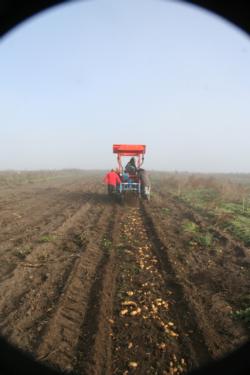
David Little has become a real expert in the old-fashioned practice of dryland farming potatoes and tomatoes in the Tomales, Fallon, and Bloomfield farm lands. In fact, the pictures below show a field of dry farm potatoes taken by Marin County's first farm advisor, M.B. Boissevain, and David's potato field today. The comparison is a bit eerie. Same field, same management, ninety years apart. David finesses the microclimates to either trap or draw up water to maximize the abundant ground moisture. Read more about the partnership between David Little's potatoes and Al Poncia's pasture in the September 2003 issue of Grown in Marin.
"There are so many microclimates and moisture variables here that I use different tillage for different reasons. If the water is there and likes to come to the surface through tilling, then that's what I do. Sometimes I want to lock it in, so I roller press the ground just enough to capture it. It's never the same approach; the water’s there, you just need to work it or trap it."
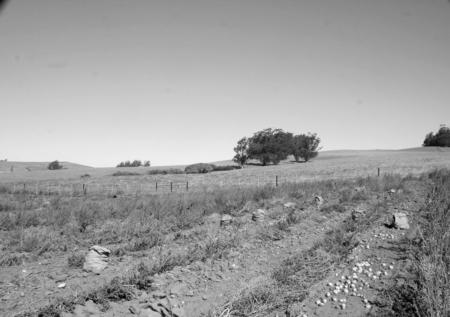
Well managed dry farming intervals can add diversity and extra income to pasture-based operations. Rotating dry farmed row crops for a season or two, then returning the land to grass and grazing, can be easier on the land than intensively farmed acreages under continuous production with little time for resting. David Evans says, "You need to put the grazing rotations at about five years to recover completely from the grain and potatoes.” By that time the natural fertility cycles obtained from good grazing management kick back in and you can farm again. Think about it - fifty to a hundred acres in grain, followed by a cash crop of potato, pumpkins, or tomatoes in the late spring for a fall harvest. Then moving the hundred acres to a new rotation and letting the grazing resume. Think about it - six years of farming rotation per field with no inputs or irrigation.
The 1935 Marin County Crop Report lists 415 acres of potatoes grown in 1935. 172 acres in 1945, 32 acres in 1955, and 30 acres total of all vegetable crops including potatoes in 1965. From then on, all field crops were rolled into one classification, making it very difficult to map potato production. View Marin County Crop Reports here
View charts of Marin County production of wheat, potatoes, peas, and artichokes, and a comparison of the four crops.
UCCE Marin is beginning to look at small grain experiments throughout the County, harkening back at least a hundred years. Wheat, barley and oats were grown all over Marin, with open fields of wheat in the Novato area. The M.B. Boissevain photos record threshers, combines, and a flourishing grain industry. Since our coastal prairie ecology is partly a grassland ecology, grains should be well-suited as a rotation crop.
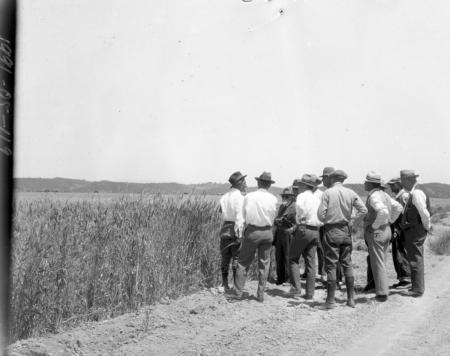
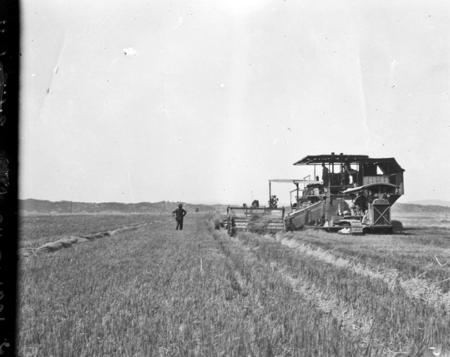
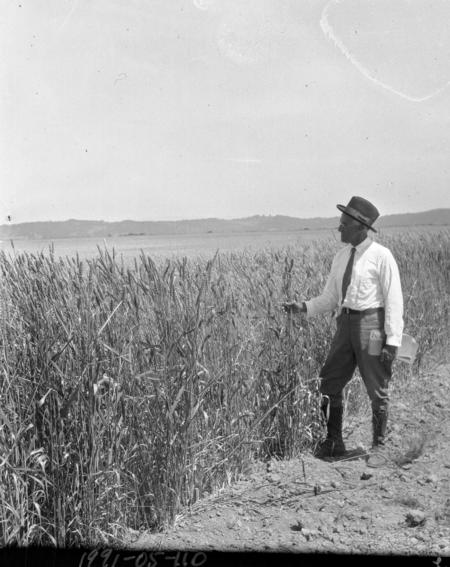
UC ANR Small Grain Production Manual available here
This year Deborah Walton and Tim Schieble grew and harvested about an acre of Emmer Wheat. Emmer is an ancient wheat berry prized in Europe as "farro" wheat, and perhaps the original wheat ancestor brought from the wild so many millenia ago in the Fertile Crescent. Modern small and medium-sized growers are developing connections with restaurants and bakers who are increasingly interested in experimenting with unusual and flavorful grains and flours to add to their locally-focused menus. It is exactly this that is being explored - growing ancient grains with an emphasis on specialty foods and reviving seed stocks of rare varieties and experimentation, as opposed to selling into the commodity markets; also taking another look at nutrient rich local feedstocks for specialty animal production.




